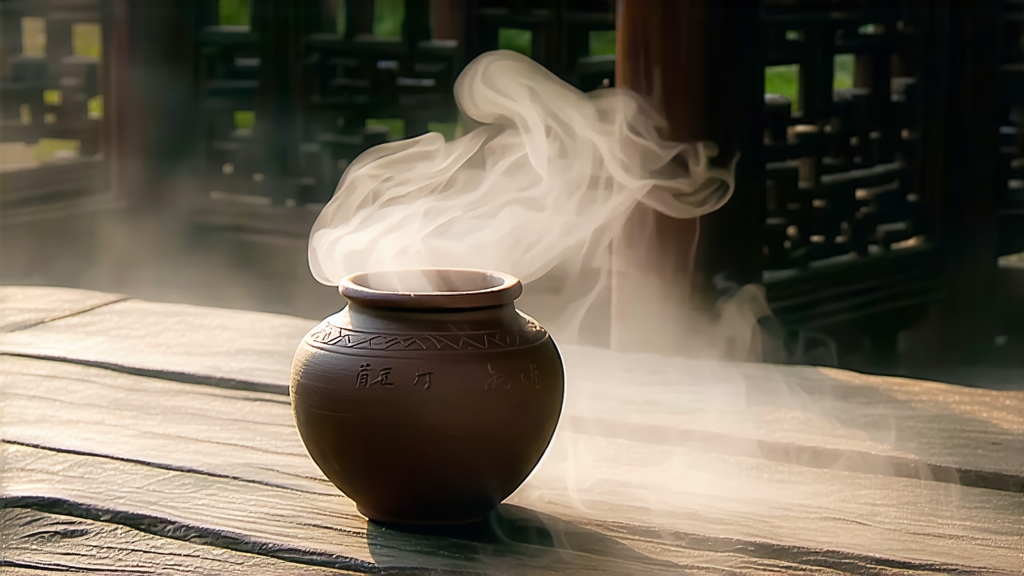
Liu Bao, literally “Six Forts,” is the name of a small township in Wuzhou, Guangxi Zhuang Autonomous Region, yet to tea historians it is shorthand for one of China’s oldest continuously produced dark teas. While Pu-erh from Yunnan has conquered auction houses and social-media feeds, Liu Bao has quietly followed the same microbial magic for fifteen centuries, sustaining traders, dockworkers, and emperors along the Pearl River and, later, the Maritime Silk Road. To understand Liu Bao is to witness how a humble leaf can absorb the humidity of sub-tropical caves, the smoke of pine-fired baskets, and the nostalgia of overseas diasporas, then release them again in a single amber cup.
History: From Military Forts to Maritime Gold
The earliest record appears in the “Chronicles of Cangwu County” (982 CE), noting that “the Six Forts garrison drinks dark tea to quell miasma.” By the Ming dynasty, when the Ming Code standardized border tea-for-horse exchanges, Liu Bao already traveled north on the backs of porters who exchanged it for Mongolian warhorses. The real boom came in the Qing. In 1792 the Qianlong Emperor exempted Guangxi tea from inland transit taxes; junks carried compressed Liu Bao down the Xun River to Guangzhou, where foreign clipper ships loaded it alongside silk and porcelain. Dockworkers called it “black gold” because the deeper the color, the higher the price. In Malaysia, tin-mine coolies discovered that a daily bowl prevented beriberi; soon Straits-Chinese towkays bid on 20-year-aged “Kung-fu” Liu Bao the way Scots chase Macallan. World War II cut the sea route, and the Cultural Revolution closed the state-run Wuzhou Tea Factory; when the bamboo curtains lifted in 1982, Malaysian merchants returned with cash-stuffed briefcases only to find that grandfathers had drunk the last 1950s vintage. Today Liu Bao is undergoing a renaissance among Chinese millennials who crave post-fermented depth without Pu-erh’s price hype.
Micro-Terroirs within One County
Guangxi’s Tropic of Cancer humidity would rot most green teas, yet it is ideal for Liu Bao’s wet-pile fermentation. Within a 30-km radius three micro-terroirs are recognized by connoisseurs:
- Liupao Township itself—red clay hills at 200 m elevation, giving a sweet, taro-like thickness.
- Tashan Village—granite soils and pine forests; the leaf carries a resinous note that Cantonese describe as “pine smoke kissing betel nut.”
- Gonghe Basin—misty alluvial flats where the river widens; the tea is softer, almost rice-sweet, favored by Hong Kong dim-sum restaurateurs for cutting through pork fat.
Farmers harvest the local large-leaf cultivar Camellia sinensis var. sinensis f. pubilimba, whose leaves are twice the size of Dragon-Well bushes and thick enough to withstand repeated pile-turning without collapsing into mulch.
Craft: When Leaves Go to Sauna
The processing code can be summarized as “kill, pile, wrap, rest, wake.”
- Sha Qing (kill-green): 300 °C drum roasters for 3–4 minutes halt oxidation but preserve leaf integrity.
- Pile Fermentation: Unique among dark teas, Liu Bao is sprinkled with indigenous “Golden Flower” spores (Eurotium cristatum) collected from old storage caves. The pile is kept at 28 °C and 85 % humidity for 25–40 days, turning every five days to oxygenate. Microbes convert catechins into theabrownins, while producing a molecule called 1,2,3-trimethoxybenzene that delivers the signature aged-wood aroma.
- Basket Pressing: Semi-fermented leaves are steamed, then hand-tamped into 40 kg bamboo baskets lined with wild banana leaf. The bamboo is toasted over pine embers, sterilizing and scenting at once.
- Cave Storage: Baskets are stacked in natural limestone caves where temperature hovers at 20 °C year-round. Over months the tea “sweats,” exhaling moisture that condenses on cave roofs and drips back, creating a slow reflux of flavor.
- Post-Maturation: After one year the baskets are moved to open warehouses for “wake-up” aer